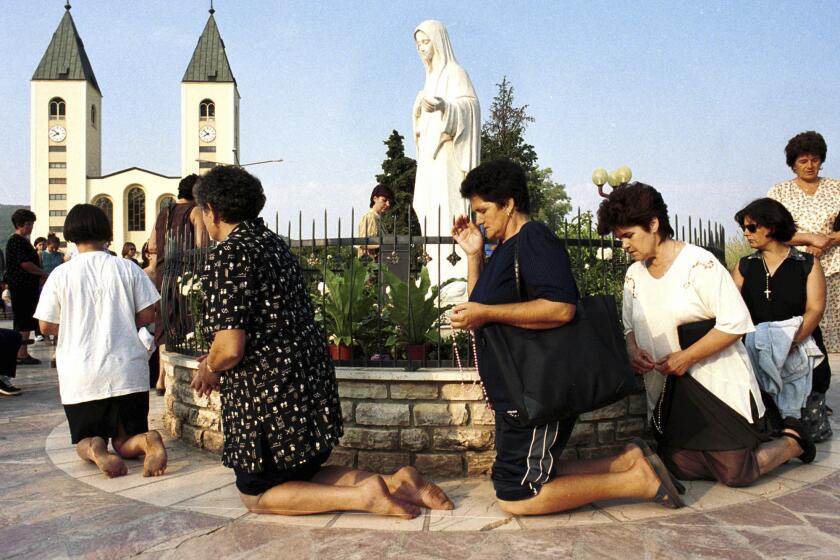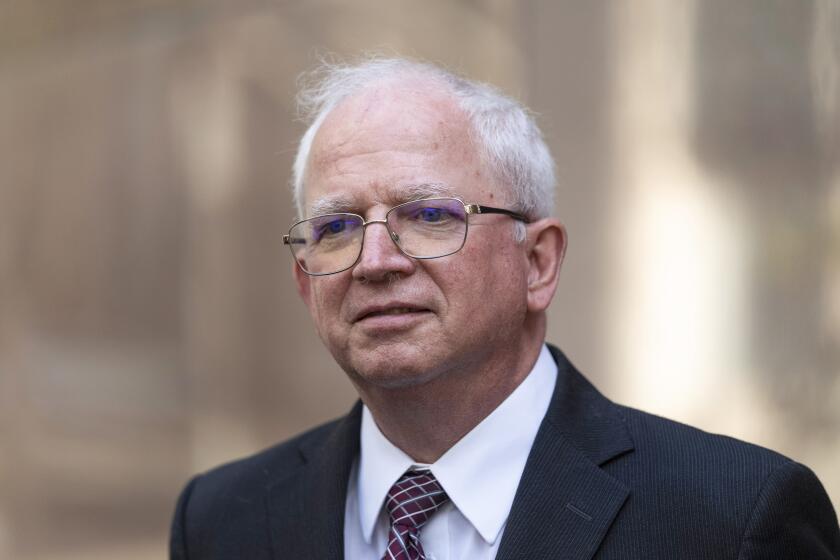Panama’s Once Robust Economy Now Trapped in Downward Spiral
Jose Lopez looked on dejectedly as the blackjack dealer quickly swept up the $40 in chips he had just bet. It was the seventh straight hand that Lopez, a Panamanian businessman, had lost, and he was broke.
Then his frown changed to a slight, ironic smile. “Well,” he said, “at least I’m helping feed the government.”
If so, the gain by the national treasury, which owns the gambling casinos, is one of the few positive aspects of Panama’s economy, trapped in a free fall this year as the result of a political crisis centered on a futile American effort to force military strongman Manuel A. Noriega from power.
The situation is critical, and there are serious questions that Panama, which had one of the few highly successful economies in all of Latin America, will ever recover.
According to a report by the U.N. Economic Commission for Latin America and the Caribbean, Panama’s gross domestic product will have deteriorated 25% during 1988.
Moreover, the worst-hit sectors--construction, manufacturing, tourism and retail sales--are those that provide most of the nation’s jobs and services, meaning that a country that until recently had the lowest unemployment and highest standard of living in the region is fast turning into a center of misery.
Major factors in the decline include the U.S. economic sanctions imposed last April by President Reagan in an effort to force Gen. Noriega, who has been charged in the United States with drug trafficking, to resign as head of the Panamanian military and go into exile.
U.S. diplomats deny that the sanctions are the controlling factor, however. The official American line is that the sanctions are responsible for only about one-fourth of the 1988 decline in the economy, which, the Administration argues, already was in serious disarray because of Noriega’s alleged corrupt and inept practices.
The Americans note, for example, that the Panamanian government has not been able to submit a national budget for two years--and one is not in sight for 1989.
Panama, on the other hand, blames nearly all of the disaster on what it calls “American economic aggression.”
Whatever the causes, the results are obvious. For example, only one traffic light is functioning along Balboa Avenue, the heavily traveled boulevard that runs for several miles along Panama City’s extensive waterfront. There is simply no money to fix the signals.
Streets that were always the smoothest in the region are now pitted with potholes that not only threaten to swallow cars but virtually close roads altogether.
At the same time, there is a severe shortage of American dollars, which serve as the Panamanian currency, and it is difficult to cash checks, forcing businesses and individuals alike to deal almost exclusively in cash or credit cards.
Only by diverting dollars from normal government operations has Noriega been able to reopen schools and pay the 16,000-man army that keeps him in power, as well as the thousands of civil servants who remain on the payroll but have little actual work to keep them busy. Evidently, Noriega believes that it is better to pay the civil workers than to risk having them take to the streets in protest.
Panama, which already owed nearly $4 billion in foreign debt at the start of 1988, has since defaulted on an additional $1.3 billion--destroying the nation’s ability to borrow money, further reducing its public and private capacity to invest or finance operations or to buy necessary products.
And things are not going to improve in the near future--or perhaps for decades. International financial institutions estimate that the Panamanian economy will shrink an additional 8% to 10% in 1989, driving many economic sectors to permanent ruin.
Already, the international banks that ran extensive and profitable “offshore” operations here have responded to the crisis by shifting nearly all of their business elsewhere.
“There is no reason for them to return,” one European diplomat observed. “They want political stability, and that won’t return here for years, if ever.”
Unemployment stands at 25%, with 200,000 people out of work. At least 20% more are considered underemployed--that is, people who normally held full-time jobs are working part time or engaging in such pursuits as selling goods on the streets.
Other statistics equally reveal the truly desperate nature of the situation. In the first half of 1987, Panama exported more than $280 million worth of goods, while for the same period this year, the figure dropped to $196.8 million. The rate is estimated to have fallen even faster for the rest of 1988.
With massive numbers of people out of work and a severe shortage of money, economic demand is contracting seriously.
Shortages Developing
This is reflected in a reduction of imports, which are crucial to the service- and consumer-oriented domestic economy. In the first three months of 1987, total imports surpassed $793 million--but this year, first-quarter statistics showed that the value of imports had plummeted to slightly more than $168 million. The estimates for the last quarter of 1988 total only $156.5 million.
What this means is that inventories in all economic sectors are not being replaced and serious shortages of consumer goods and industrial products are developing, eroding the standard of living.
Yet another measure of the worsening economy is the drop in government tax revenue. In third quarter 1987, the treasury picked up $98.9 million in income. For the same period this year, revenue totaled $51.6 million, not enough to approach government expenditures.
Equally alarming figures are found for foreign investment, tourism and construction. And even if Jose Lopez and others who lose consistently at gambling keep challenging the casino dealers, gambling revenue is off.
There are some positive forces in the economy nevertheless. Agricultural exports generally are holding their own and, in a few cases, are even rising. Revenue from oil refineries has increased, and the government earns more than an average of $12 million a month from a pipeline that carries oil through the country.
Noriega Surviving
In addition, the more than 40,000 Americans here, mostly employees of the Panama Canal Commission and personnel attached to the U.S. Southern Military Command, pump millions of dollars a year into the economy and will continue to do so for years, even beyond the final U.S. pullout from the canal in 1999.
Although the International Monetary Fund estimates another drop of 10% in Panama’s domestic economy next year, other economists believe that the figure will be less drastic--but only because the situation has neared rock bottom and there is not much further to fall.
That is bad news for the U.S. effort to force Noriega out. According to non-American diplomats here, because Noriega has survived the virtual destruction of the economy so far, there is little to indicate that he will leave.
“As long as he pays the army and keeps the government workers at least partially paid and the Americans don’t present any options for change, there doesn’t seem to be sentiment here for an uprising,” one European ambassador said.
But, according to several experts, it is not likely that Panama will recover its past prosperity and economic stability anytime soon, even if Noriega is forced out.
“The foreign banking business is dead here, probably forever,” one foreign expert said, “and if investment and loans aren’t resumed quickly, the economic structure of the place will be in such bad shape that it will take years to rebuild.”
More to Read
Start your day right
Sign up for Essential California for news, features and recommendations from the L.A. Times and beyond in your inbox six days a week.
You may occasionally receive promotional content from the Los Angeles Times.






